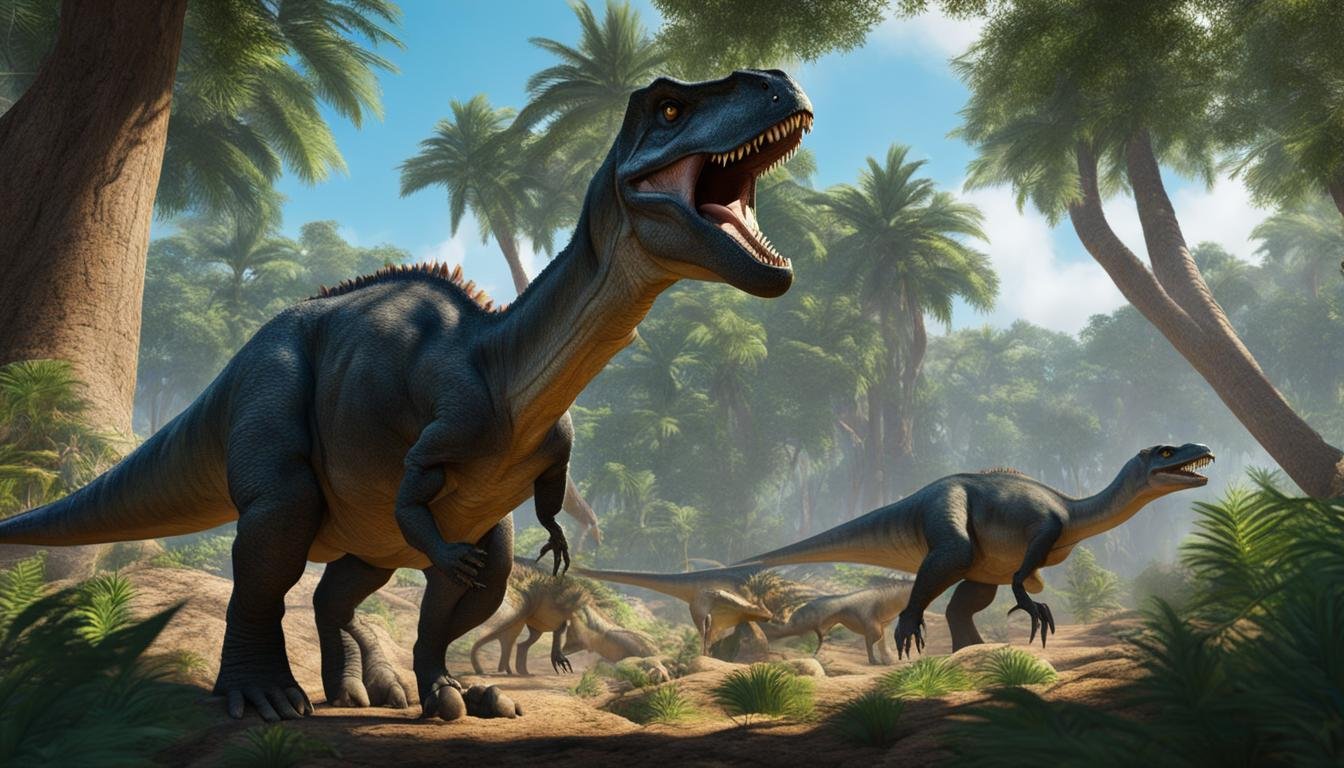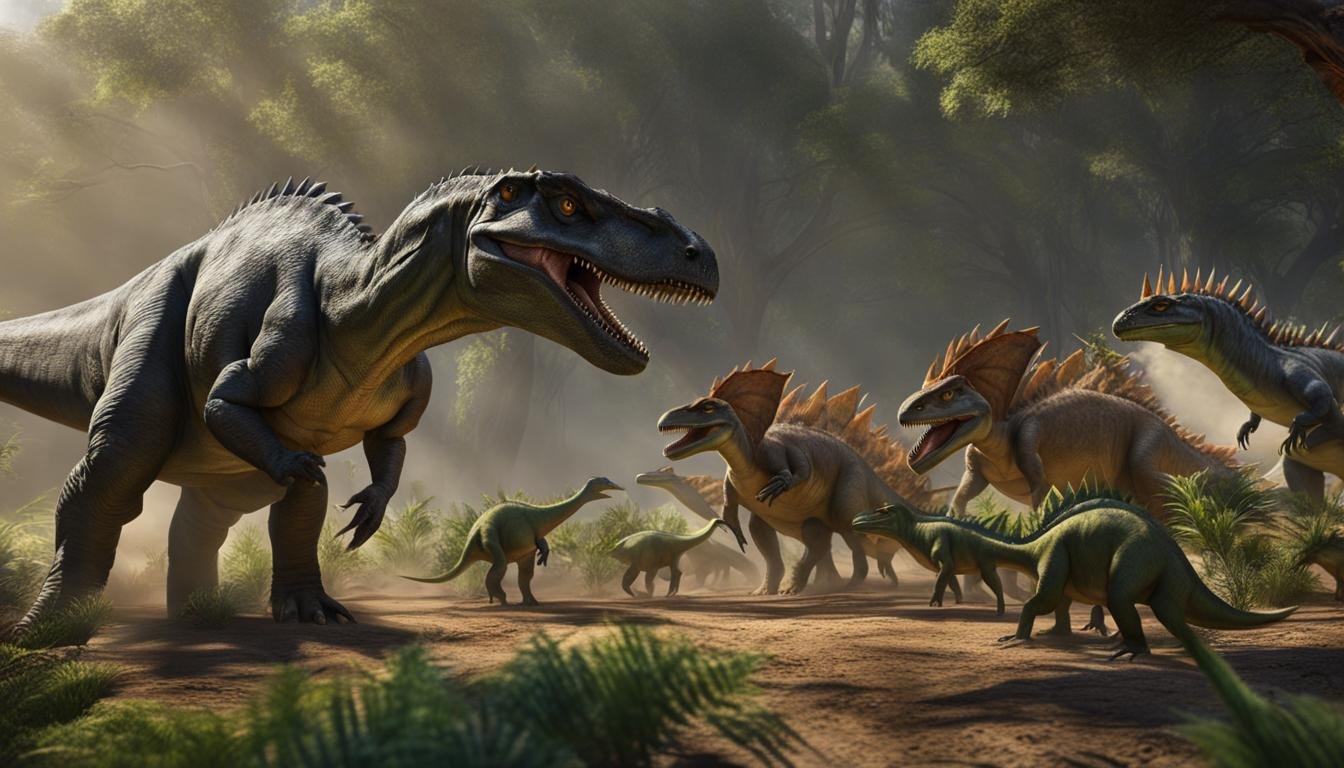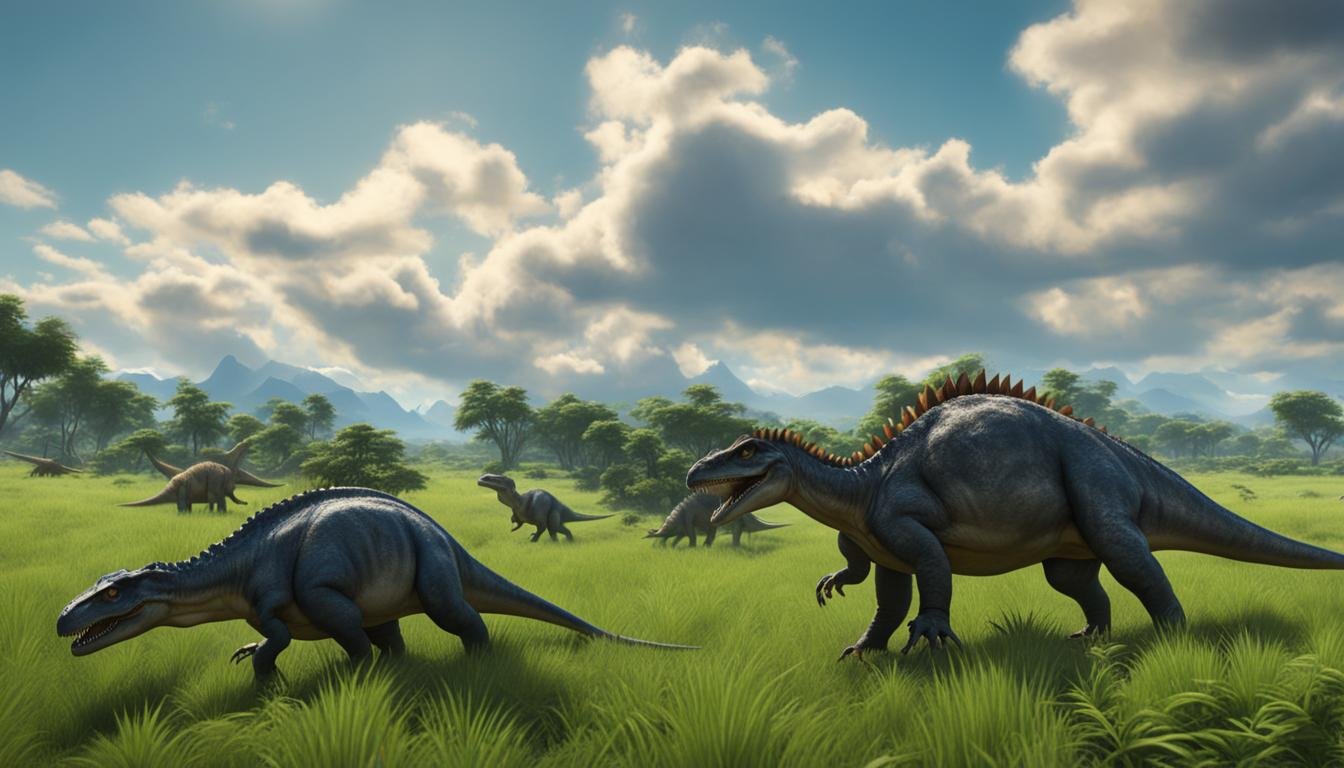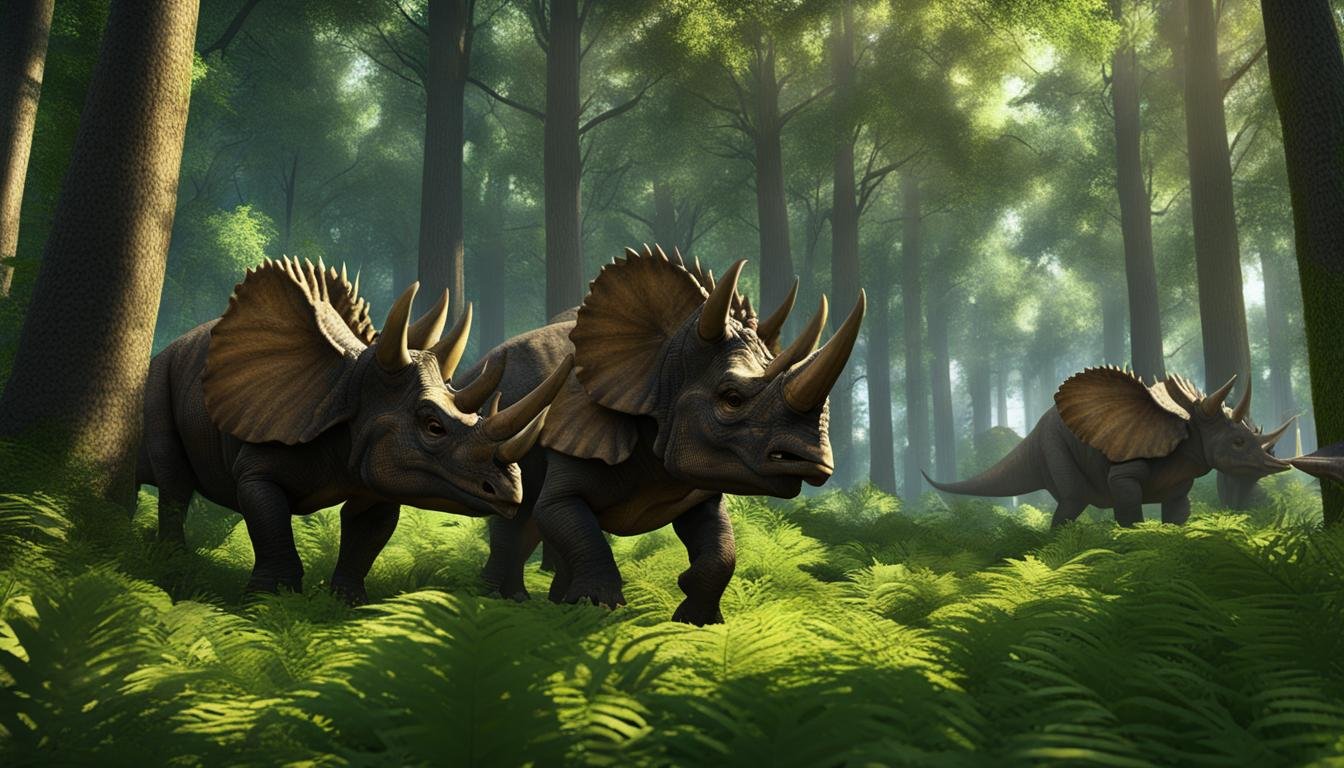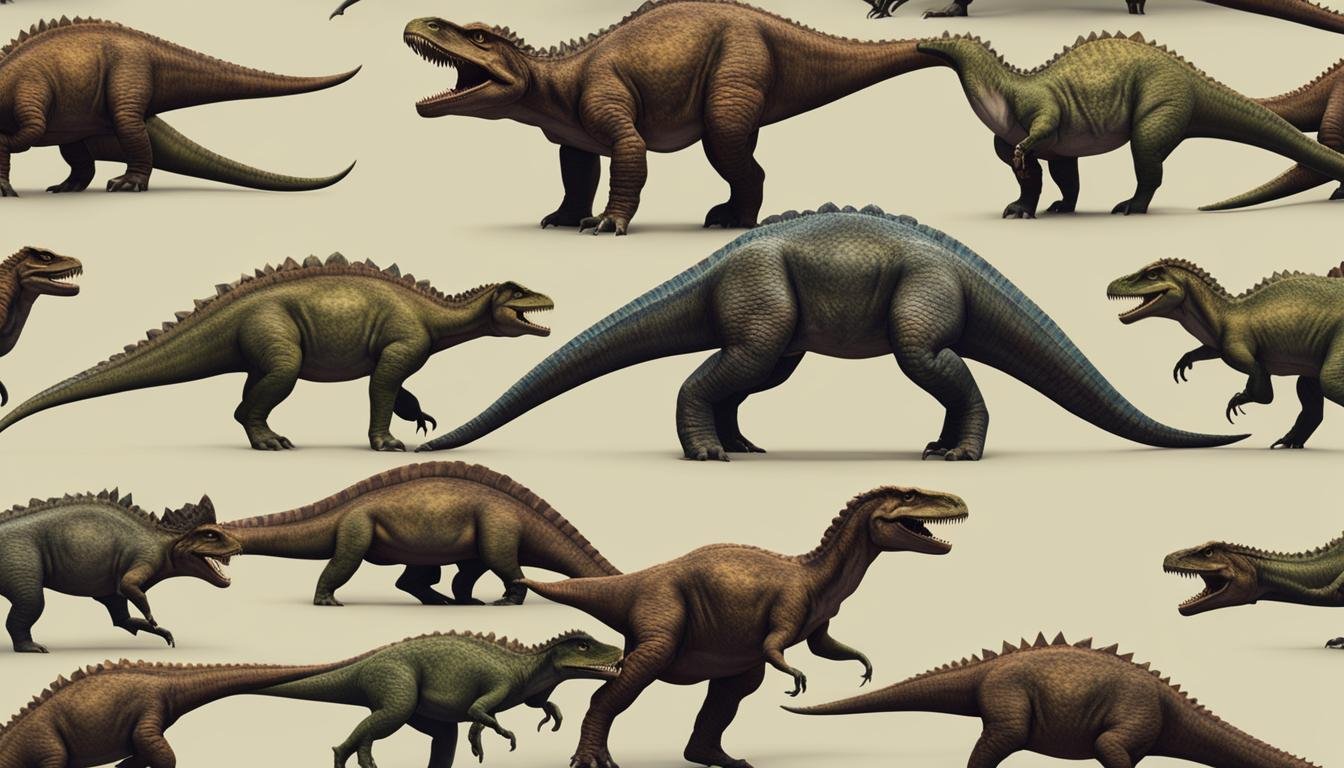Dinosaurs, despite their fearsome reputation, exhibited parental care behaviors similar to those seen in modern animals. Fossilized evidence, such as nests and eggs, provides insights into the parental instincts of dinosaurs. The oldest known dinosaur eggs date back to the Late Triassic period, approximately 230 million years ago.
One example of dinosaur parental care is the duck-billed Maiasaura, which is believed to have nested in colonies and provided extensive food and protection for its hatchlings. Oviraptorids, like the Citipati osmolskae or “Big Mama,” have been found brooding on their nests, indicating protective behavior.
| Key Takeaway | Detail |
|---|---|
| Parental Resemblance | Dinosaur parental care behaviors show similarities to those observed in modern animals. |
| Fossil Evidence | Fossils, including nests and eggs, offer valuable insights into the parenting instincts and strategies of dinosaurs. |
| Maiasaura Parenting | The Maiasaura dinosaur species nested in colonies and provided extensive care, including food and protection, for their hatchlings. |
| Oviraptorids Brooding | Oviraptorids, exemplified by specimens like “Big Mama”, demonstrated brooding behavior, staying on their nests as part of parental care. |
| Need for Further Research | Additional research and fossil discoveries are necessary to gain a fuller understanding of dinosaur parental care and nurturing behaviors. |
The Evolutionary Success of Oviraptorids: Protective Parenting in Dinosaurs
Oviraptorids, a family of dinosaurs that existed during the Late Cretaceous period, were initially thought to be egg thieves. However, further research has revealed that Oviraptorids were actually caring parents. One remarkable discovery is the fossilized remains of “Big Mama,” a 75-million-year-old Oviraptorid. This dinosaur was found curled up on its nest of eggs, indicating a behavior of protective brooding at the expense of its own safety. The presence of such nurturing behaviors challenges the traditional notion of dinosaurs as ferocious and uncaring creatures.
Unlike other dinosaurs, Oviraptorids built nests with care and employed unique incubation methods. They often laid their eggs in rings or stacks, allowing them to incubate without sitting on them directly. This not only protected the eggs from potential damage but also ensured a suitable environment for their development. These findings highlight the complexity of dinosaur behaviors and reinforce the importance of parental care in the evolutionary success of certain species.
“The Oviraptorid ‘Big Mama’ provides a fascinating glimpse into the protective parenting behavior of these ancient creatures. This discovery challenges our preconceptions and underscores the need to continuously reassess our understanding of dinosaur behavior.”
Oviraptorids: Breaking the Egg Thief Stereotype
| Oviraptorid Species | Parental Behavior |
|---|---|
| Big Mama | Brooding on nest |
| Other Oviraptorids | Possibly similar nesting and brooding behavior |
The discovery of protective parenting behaviors in Oviraptorids, such as “Big Mama,” provides a new perspective on dinosaur parental care. While there is still much to learn about this fascinating aspect of dinosaur behavior, these findings remind us that our understanding of prehistoric creatures continues to evolve. The nurturing behaviors exhibited by Oviraptorids suggest that parental care played a crucial role in their evolutionary success, contributing to the survival of their species over millions of years.
The Maiasaura: A Model of Dinosaur Parental Care
The Maiasaura, commonly known as the “good mother lizard,” is a prime example of dinosaur parental care. These dinosaurs lived during the Late Cretaceous period, around 80 to 75 million years ago, and exhibited remarkable nurturing behaviors. Fossil evidence suggests that Maiasaura parents nested in large colonies, creating a social structure similar to modern-day birds. This communal nesting behavior provided several advantages in terms of protection and care for their hatchlings.
In proposed Maiasaura nesting colonies discovered in Montana, paleontologists have found juvenile dinosaur bones, indicating parental care and support during early life stages. This finding challenges the long-standing belief that dinosaurs abandoned their offspring. The presence of young dinosaur bones in close proximity to adult nests suggests that the Maiasaura parents provided extensive food and protection for their hatchlings until they were ready to venture out on their own.
The Maiasaura’s nesting colonies also indicate a social structure that involved multiple adults working together to raise the young. This level of cooperative care is quite rare in the animal kingdom, further highlighting the advanced parental behavior exhibited by these dinosaurs. The discovery of trampled eggshells and plant matter in the nests suggests that the Maiasaura parents may have fed and cared for their young before they were old enough to leave the nest.
| Nesting Behavior | Parental Care | Benefits |
|---|---|---|
| Communal nesting in colonies | Extensive food and protection provided for hatchlings | Increased survival rates for young dinosaurs |
| Cooperative care by multiple adults | Feeding and nurturing of young dinosaurs | Enhanced growth and development |
The Maiasaura’s nesting colonies and the parental care behaviors exhibited by these dinosaurs highlight the complexity of dinosaur social dynamics and challenge the long-held notion that dinosaurs were cold and uncaring creatures. The nurturing behaviors seen in the Maiasaura provide valuable insights into the evolutionary success of certain dinosaur species and emphasize the importance of parental care in prehistoric ecosystems.
Dinosaur Egg Types and Incubation Methods
Dinosaur eggs varied in their shell types and incubation methods. While most dinosaurs laid hard-shelled eggs, recent research suggests that some dinosaurs, such as Protoceratops and Mussaurus, actually laid soft-shelled eggs similar to modern reptiles. Mapping these findings onto the dinosaur family tree indicates that all dinosaurs may have originally laid soft-shelled eggs, with separate lineages evolving to have hard shells over time. The architecture of the eggshell and the arrangement of eggs in a nest provide insight into incubation methods and nest styles. Some dinosaurs buried their eggs entirely, while others incubated them by brooding, similar to modern birds and crocodilians.
| Dinosaur | Egg Type | Incubation Method |
|---|---|---|
| Protoceratops | Soft-shelled | Buried in sand |
| Mussaurus | Soft-shelled | Brooded by parents |
| Tyrannosaurus rex | Hard-shelled | Buried in ground |
| Hadrosaur | Hard-shelled | Brooded by parents |
This table showcases the different egg types and incubation methods observed in various dinosaur species. The soft-shelled eggs of Protoceratops and Mussaurus were likely adapted to the specific nesting environments of these dinosaurs. Protoceratops buried their eggs in sand, providing them with protection from predators and maintaining a stable temperature for incubation. Mussaurus, on the other hand, brooded their eggs, keeping them warm and safe until they hatched.
Meanwhile, dinosaurs like Tyrannosaurus rex and Hadrosaurs laid hard-shelled eggs that were buried in the ground. This burial method offered protection from predators and helped maintain a consistent temperature for successful incubation. Some species of Hadrosaurs also engaged in parental brooding, where the parents would sit on the nest to keep the eggs warm and provide protection.
The diversity in egg types and incubation methods among dinosaurs highlights their ability to adapt to different environments and maximize the survival chances of their offspring. These ancient reptiles, like their modern counterparts, employed various strategies to ensure the successful development and hatching of their eggs.
Dinosaur Parenting: Nest Guarding or Parental Abandonment?
The question of how dinosaurs behaved as parents remains a topic of debate among scientists. While some species exhibit evidence of nest guarding behavior, others seem to have abandoned their offspring. Oviraptorids, like the parrot-like dinosaurs, provide insights into nest guarding. As fossils suggest, some oviraptorids were found in positions that imply protective behavior, curled up on their nests. However, it is still unclear if this behavior was common among all oviraptorids. On the other hand, large dinosaurs like Sauropods show nesting behaviors but without any signs of post-laying care, suggesting that continuous guarding may have been impractical.
In the words of Dr. Grant, a paleontologist from the Dinosaur Research Institute: ‘The evidence we have so far paints a complex picture of dinosaur parenting. It seems that there was variation in their parental care strategies, with some species investing more in guarding and others adopting a “set it and forget it” approach.’ The size and energy requirements of certain dinosaurs may have influenced their parenting behaviors.
To investigate this further, researchers are actively studying more fossils and analyzing nesting patterns and behaviors. New discoveries in the future may shed additional light on the fascinating world of dinosaur parental care and help us better understand the diverse parenting strategies that existed in the ancient past.
‘The evidence we have so far paints a complex picture of dinosaur parenting. It seems that there was variation in their parental care strategies, with some species investing more in guarding and others adopting a “set it and forget it” approach.’
Dinosaur Social Dynamics: Nesting Grounds and Grouping Behavior
Paleontologists have discovered fascinating evidence of different nesting and grouping behaviors among dinosaurs, shedding light on their complex social dynamics. Some fossils suggest that young dinosaurs of various species formed cross-species social groups, similar to modern animals. These groupings may have provided advantages such as increased protection from predators and better opportunities for survival. The presence of trampled eggshells and plant matter in Maiasaura nests found at Montana’s Egg Mountain indicates extensive parental care, suggesting that parents may have fed and cared for their young before they ventured out on their own.
However, not all dinosaurs exhibited family-like groupings, indicating a diverse range of social behaviors within the ancient reptilian world. Some fledglings may have formed their own communities without parental guidance. This variation in nesting and grouping behaviors emphasizes the complexity of dinosaur social dynamics and highlights the need for further research to fully understand the interactions and relationships between young dinosaurs within their respective species and across different species.
“The discovery of cross-species social groups among young dinosaurs offers a fascinating glimpse into their social behaviors and the advantages they gained through collective living.”
Examples of Dinosaur Grouping Behaviors
| Dinosaur Species | Grouping Behavior |
|---|---|
| Maiasaura | Formed nesting colonies; evidence of parental care |
| Tyrannosaurus rex | Most likely solitary, limited evidence of group interactions |
| Hadrosaurs | Formed herds for migration and defense against predators |
| Velociraptors | May have hunted in packs, displayed group hunting behaviors |
The diverse behaviors observed in dinosaur social dynamics offer a glimpse into the complexity of prehistoric ecosystems. Understanding these social dynamics enhances our knowledge of how dinosaurs interacted, communicated, and survived throughout different stages of their lives. The study of dinosaur grouping behaviors not only provides valuable insights into the past but also contributes to our understanding of modern animal behavior and the importance of group dynamics in ecological and evolutionary contexts.
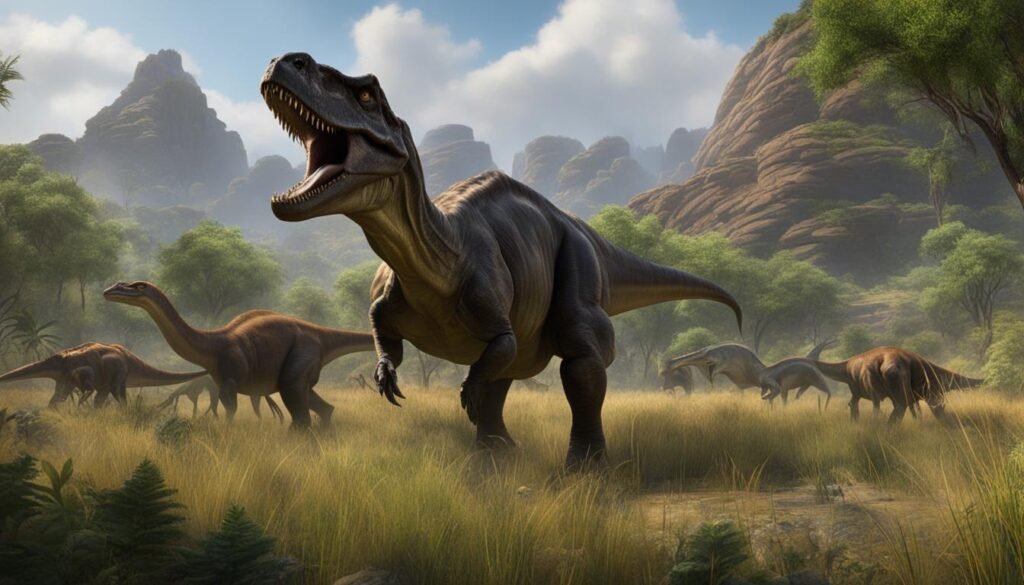
Conclusion
The study of Dinosaur Parental Care reveals the behavioral complexity and ancient parenting strategies exhibited by these prehistoric creatures. Through the analysis of fossilized nests, eggs, and bones, scientists have gained valuable insights into the diverse ways in which dinosaurs cared for their young.
From the brooding behaviors of Oviraptorids like “Big Mama” to the nesting colonies of the Maiasaura, dinosaurs displayed a range of social and parental dynamics. These discoveries challenge the popular perception of dinosaurs as ferocious and uncaring creatures, emphasizing their capacity for nurturing and protective behaviors.
Further research is needed to fully understand the extent of parenting strategies among dinosaurs and their contribution to their evolutionary success. The study of dinosaur parenting not only offers fascinating glimpses into the ancient world but also enhances our understanding of modern animal behavior and the significance of parental care in ecological and evolutionary contexts.

